
Corrine Kenner specializes in bringing metaphysical subjects down to earth. She's a certified tarot master and the author of ten books.
Corrine was born in Minnesota and raised on a farm in North Dakota. In her late teens and early twenties, she lived in Brazil and Los Angeles, where she earned a bachelor's degree in philosophy from California State University. For the first part of her career she worked as a newspaper reporter, magazine editor, and media relations specialist. Now she lives in Minneapolis with her husband, a software developer, and their daughters.
Corrine offers tarot classes and writing workshops on a regular basis, both in person and online. For more information, visit her website at corrinekenner.com.
C O R R IN E K ENN E R





Also by Corrine Kenner
Crystals for Beginners
The Epicurean Tarot
The Ma'at Tarot Workbook
Simple Fortunetelling with Tarot Cards
Strange But True
Tall Dark Stranger: Tarot for Love and Romance
TarotJournaling
Forthcoming
The Wizards Tarot
xi
xiii
xv
 his book was born in November 2006. It started as a short feature article for National Novel Writing Month-a web-based annual event in which thousands of people worldwide playfully commit to writing a full-length novel during the month of November. The organizers simply asked me an open-ended question: how can you write a novel using tarot cards to guide you? My answer ran all of four hundred words.
his book was born in November 2006. It started as a short feature article for National Novel Writing Month-a web-based annual event in which thousands of people worldwide playfully commit to writing a full-length novel during the month of November. The organizers simply asked me an open-ended question: how can you write a novel using tarot cards to guide you? My answer ran all of four hundred words.
After that initial exchange, I decided to elaborate on the ideas and suggestions I had offered to eighty thousand writers on the NaNoWriMo website. First I simply assembled and reviewed my notes. Then I turned those notes into handouts for my own writers group. Before long, I had compiled a detailed outline for the book you're holding now.
I didn't invent many of the techniques and ideas in this book. Instead, I've simply combined old ideas in a new way. This book applies the precepts of tarot reading to standard literary principles and shows how closely they're linked. In fact, tarot reading and storytelling dovetail seamlessly, both in theory and in practice. There's a surprising similarity, for example, between standard tarot spreads and the classical story structure that Aristotle first described. There's also a remarkable parallel between the Fool's Journey through the cards and the Hero's journey concept, popularized in our time by Joseph Campbell and now a literary model for many modern-day storytellers.
Not only can you use the tarot to brainstorm and develop story ideas, you can use it in the later steps of the writing process, too: from finding a publisher to publicizing and promoting a finished work. In fact, this book can serve as a complete course in fiction writing, as well as a comprehensive reference for writers who are just becoming familiar with a tarot deck.
If you're like most of the people reading this book, you're probably already enthusiastic about writing. You may have studied fiction and literature at the college level. With any luck, you've completed a story or two of your own. And at this point, you probably have a compelling new story idea trying to break free-and you may even dream of writing the great American novel. You'll get the most from this book if you're a short-story writer, novelist, screenwriter, or playwright-but poets, diarists, essayists, and writers of creative nonfiction can also glean inspiration from these pages. Even writers who make a living in the corporate world can use this guide to add polish and flair to their written work.
Here you should find just enough information to encourage you without overwhelming you with detail. My goal is to kick-start your creativity without confining you to rote mechanical exercises or condemning you to a strict writing regimen. In these pages you'll find a wide range of resources: simple spreads and layouts, card descriptions, and explanations of the symbols, myths, archetypal imagery, and astrological references that are built into most standard tarot decks. You'll also find inspiration for your writing practice, writing prompts, and ideas to incorporate into your work.
Feel free to explore, experiment, and entertain yourself, and let me know how well this guide works for you-especially if you're using it to write a novel in thirty days.
Corrine Kenner
Minneapolis, Minnesota
August 2008
 'irst of all, I'd like to thank the writers and tarot enthusiasts who tried the techniques in this book and offered suggestions and ideas for bringing the cards to life in story form.
'irst of all, I'd like to thank the writers and tarot enthusiasts who tried the techniques in this book and offered suggestions and ideas for bringing the cards to life in story form.
I'm especially grateful to the members of the first Tarot for Writers Workshop in Minneapolis: P. J. Doyle, Charlene Jaszewski, Carol Perkins, Andie Ryan, and Pam ThiltgenHester. I'm also fond of four online workshop participants who helped me develop the materials for this guide: Denise Alleva, Susanne Fritzsche, Ann Livingston, and Cynthia Tedesco.
My thanks go, as well, to John Carlson, Michael Gerleman, and Denise Hesselroth, who offered their comments on my early drafts, and to Melani Weber, who contributed the subplot development technique in chapter six.
I'm thankful for the advice of Lisa Finander, the developmental editor who suggested that I personalize this book with my own writing experiences. I'd also like to thank three editors at Llewellyn: Rebecca Zins, who showed enthusiasm for the guide even when it was barely more than an outline; Mindy Keskinen, who suggested structure and formatting improvements; and Connie Hill, who edited the manuscript. I also appreciate the work of Kevin Brown, who designed the cover, and Joanna Willis, who designed the inside pages.
And of course, I owe a huge debt of gratitude to my husband, Dan-whose unwavering support makes it possible for me to write-and my daughters Katherine, Emily, and Julia, who make it fun.

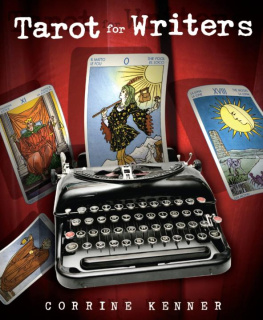
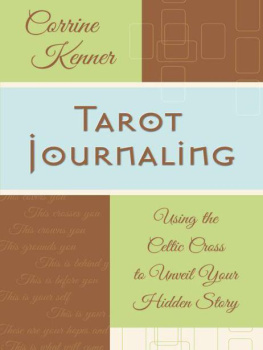
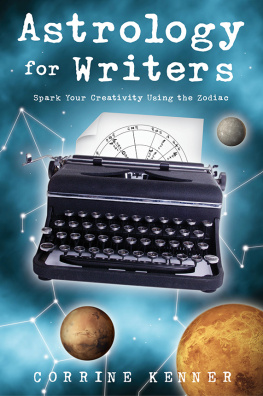

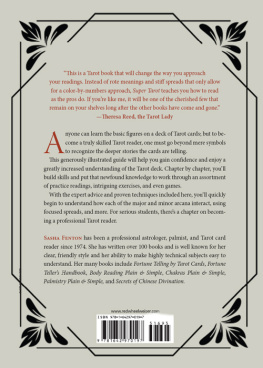
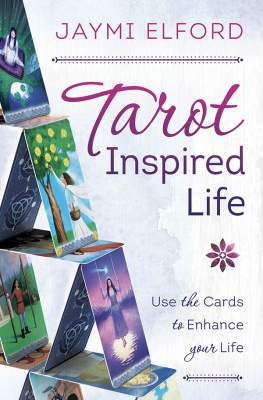
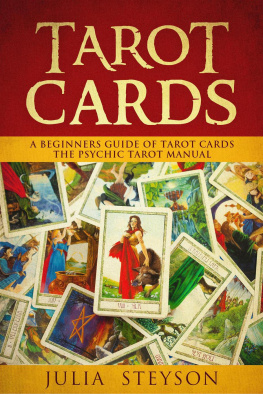
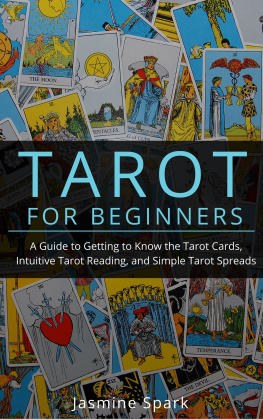

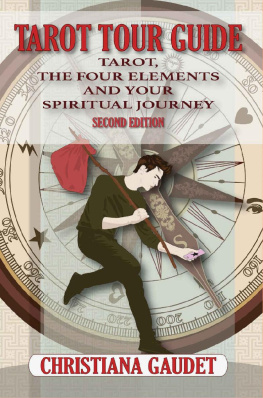
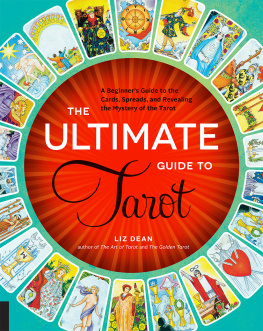



 his book was born in November 2006. It started as a short feature article for National Novel Writing Month-a web-based annual event in which thousands of people worldwide playfully commit to writing a full-length novel during the month of November. The organizers simply asked me an open-ended question: how can you write a novel using tarot cards to guide you? My answer ran all of four hundred words.
his book was born in November 2006. It started as a short feature article for National Novel Writing Month-a web-based annual event in which thousands of people worldwide playfully commit to writing a full-length novel during the month of November. The organizers simply asked me an open-ended question: how can you write a novel using tarot cards to guide you? My answer ran all of four hundred words. 'irst of all, I'd like to thank the writers and tarot enthusiasts who tried the techniques in this book and offered suggestions and ideas for bringing the cards to life in story form.
'irst of all, I'd like to thank the writers and tarot enthusiasts who tried the techniques in this book and offered suggestions and ideas for bringing the cards to life in story form.